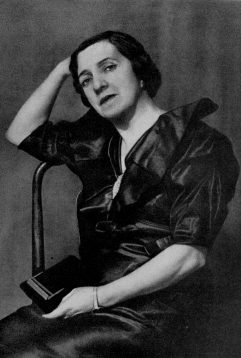AGRIPPINA VAGANOVA (1879 1951) .
Vaganova was the daughter of an usher at the Mariinsky. At the Imperial Ballet School she studied under Ivanov, Vazem, Gerdt and Nikolai Legat, graduating in 1897. As a dancer with the Imperial Ballet she was known as the Queen of variations, renowned for her jumps and batteries; although her lack of beauty meant that she did not receive the title of ballerina until 1915, the year before her retirement. Her many roles included, Odette-Odile (Swan Lake), the Mazurka (Chopiniana), Tsar-Maiden (The Little Humpbacked Horse); she created the role of the Chinese Doll in Fairy Doll (1903).
She is most remembered as a great teacher, of generations of dancers, taking the best of the old imperial style a Romantic plasticity allied with Italian bravura and blending it with a more athletic movement, to form what became known as the Vaganova system; a method that did not isolate one particular part of the body, but trained it into one harmonious whole. Instead of the hitherto vague corrections given to a pupil, and using an analysis of musculature, Vaganova gave precise corrections for proper placement.
Her first great pupil was Marina Semenova; later, Natalia Dudinskaya and Irina Kolpakova would be acclaimed.
Her most important choreography, which demonstrated the strength of her teaching style, was Swan Lake (1933) and La esmeralda (1935), particularly the virtuoso pas de deux in Act II, Diana and Actaeon.
She was director of the GATOB (renamed the Kirov in 1935) from 1931 37, and later of the School which bears her name, using her position in both to fight tooth and nail for the survival of classical ballet, in the face of opposition from doctrinaire ideologues.
